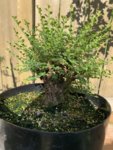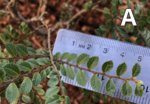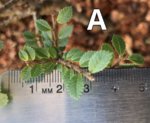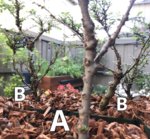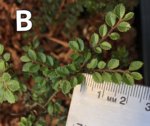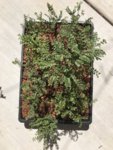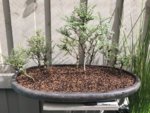Captain.Bonsai
Mame
I've decided to create a Seiju Elm forest. I've collected specimen from 2 different cultivars that are clearly Seiju yet ever-so-slightly different in leaf size and color. There's also a minor difference in the bark color and quality. Yes, they're all Seiju.
Aside from the obvious: they have genetic differences based on environmental factors... What's your take on age and maturity in species characteristics? I'd like to hope that long-term aging will soften the differences but I'm not confident that will be the case. Maybe it will magnify them.
Would you plant them together? Influence my choice.
At first glance only the trained eye would notice, and I will never compete or show my bonsai. I'm leaning towards going for it and embracing the slight variations. Yet I feel compelled to get your opinions and experience because the discrepancies keep grabbing my attention.
Sorry, no pictures until Monday.
Aside from the obvious: they have genetic differences based on environmental factors... What's your take on age and maturity in species characteristics? I'd like to hope that long-term aging will soften the differences but I'm not confident that will be the case. Maybe it will magnify them.
Would you plant them together? Influence my choice.
At first glance only the trained eye would notice, and I will never compete or show my bonsai. I'm leaning towards going for it and embracing the slight variations. Yet I feel compelled to get your opinions and experience because the discrepancies keep grabbing my attention.
Sorry, no pictures until Monday.




